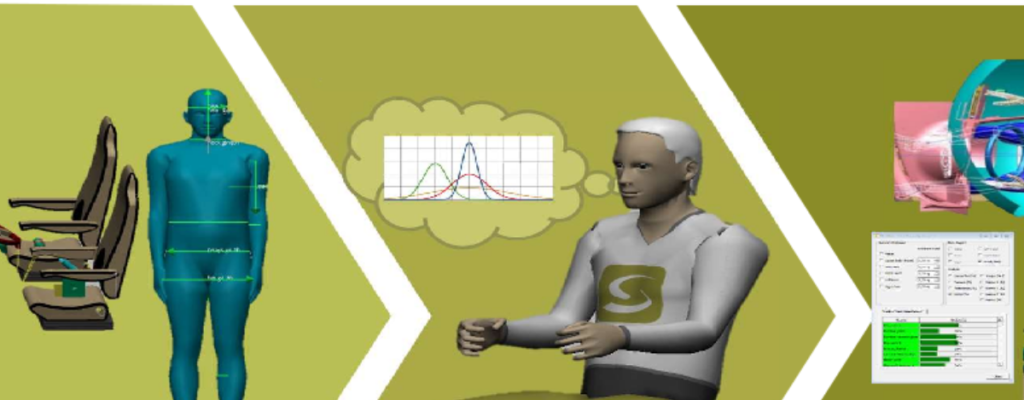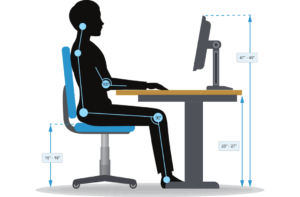Application of Ergonomic Principles in the Automotive Industry

In the dynamic world of automotive manufacturing, where precision and efficiency are paramount, the integration of ergonomic principles plays a crucial role in ensuring both the safety of workers and the quality of the final product. From assembly line design to the layout of vehicle interiors, ergonomics influences nearly every aspect of automotive production. In this article, we’ll explore how ergonomic principles are applied in the automotive industry and the benefits they bring to both workers and consumers.
1. Ergonomic Design of Manufacturing Facilities
The layout and design of manufacturing facilities in the automotive industry are carefully planned to optimize workflow, minimize worker fatigue, and enhance productivity. Ergonomics plays a central role in this process, guiding decisions on workstation design, equipment placement, and material handling systems.

For example, assembly line stations are designed to accommodate workers of varying heights and body sizes, with adjustable workbenches and ergonomic tools to reduce strain and fatigue. Automated material handling systems are used to transport heavy components and reduce the risk of manual lifting injuries. By integrating ergonomic principles into the design of manufacturing facilities, automotive companies can create safer and more efficient working environments for their employees.
2. Ergonomic Design of Vehicle Interiors
The interior of a vehicle is where the driver and passengers interact most directly with the product. As such, ergonomic considerations are critical in ensuring comfort, convenience, and safety for occupants.
Ergonomics influences the design of everything from the placement of controls and displays to the shape and contour of seats. Controls should be positioned within easy reach of the driver and arranged logically to minimize distraction and confusion. Seats should provide adequate support and adjustability to accommodate a wide range of body types and driving preferences.
Additionally, ergonomic design principles are applied to features such as steering wheels, pedals, and instrument clusters to ensure optimal usability and reduce the risk of driver fatigue and discomfort during long periods of driving.
3. Human-Machine Interface Design
The human-machine interface (HMI) refers to the interaction between humans and the various technological systems within a vehicle, such as infotainment systems, navigation systems, and driver assistance features. Ergonomics plays a crucial role in designing HMIs that are intuitive, user-friendly, and safe to use while driving.
For example, touchscreens and control knobs should be designed with tactile feedback and intuitive menu structures to minimize distraction and keep the driver’s attention focused on the road. Voice recognition systems should be robust and accurate to allow for hands-free operation of essential functions.
By applying ergonomic principles to the design of HMIs, automotive manufacturers can enhance the overall driving experience and reduce the cognitive workload on drivers, leading to safer and more enjoyable journeys.
4. Ergonomics in Vehicle Testing and Evaluation

Ergonomics is also a critical consideration in the testing and evaluation of vehicles during the development process. Human factors specialists conduct usability tests and ergonomic evaluations to identify potential design flaws and areas for improvement.
For example, test drivers provide feedback on the comfort and usability of vehicle controls, the visibility of displays, and the ease of ingress and egress. This feedback is used to refine the design of the vehicle and ensure that it meets the needs and preferences of its intended users.
Additionally, ergonomic assessments are conducted to evaluate the ergonomic suitability of vehicle designs for drivers and passengers of different ages, sizes, and abilities. This helps to ensure that vehicles are accessible and comfortable for a wide range of users, including those with disabilities or mobility impairments.
In conclusion, ergonomic principles play a vital role in the automotive industry, from the design and manufacturing of vehicles to their use by consumers. By integrating ergonomic considerations into every stage of the product development process, automotive manufacturers can create vehicles that are safer, more comfortable, and more user-friendly for drivers and passengers alike. As technology continues to advance, the importance of ergonomics in the automotive industry will only continue to grow, driving innovation and improving the overall quality of vehicles for years to come.


